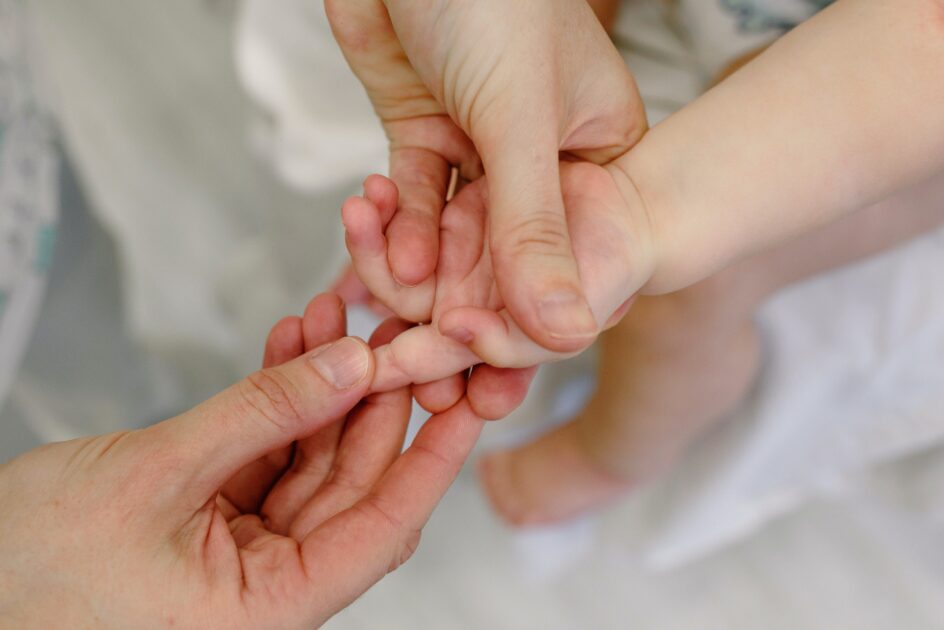Common type of skin issues in new born Babies
- Rashes: Rashes in new-borns can be due to a variety of causes including irritation from wet or dirty diapers, heat, and infections such as yeast infections. Diaper dermatitis, also known as diaper rash, is a common type of rash that occurs due to prolonged exposure to wet or dirty diapers. Rashes can be red, bumpy, and itchy, and they can be painful for the baby. To prevent rashes, it’s important to change diapers frequently and to clean the diaper area thoroughly. In severe cases, a pediatrician may prescribe topical creams or ointments to soothe the skin.
- Acne: Baby acne is a common skin condition that affects many new-borns. It is caused by hormonal changes and can appear on the face, neck, and back. Baby acne usually starts as small, red bumps and can progress to whiteheads and blackheads. Baby acne is not harmful and will usually clear up on its own within a few months. It’s important not to squeeze or pick at the acne as this can cause scarring.
- Eczema: Eczema is a skin condition that causes dry, itchy, and inflamed skin. It is more common in infants who have a family history of allergies or asthma. Eczema can appear anywhere on the body, but it is most common on the face, neck, and behind the knees. To manage eczema, it’s important to keep the skin moisturized, avoid harsh soaps and detergents, and avoid triggers such as extreme temperatures and certain foods. In severe cases, a pediatrician may prescribe topical creams or oral medications to help control symptoms.
- Cradle cap: Cradle cap is a scaly and crusty rash that appears on the scalp and can sometimes spread to other areas of the body. It is usually harmless and will go away on its own, but it can be unsightly. To manage cradle cap, it’s important to gently shampoo the scalp regularly and to use a soft brush to remove any flaking skin. In severe cases, a pediatrician may prescribe a medicated shampoo or cream to help control symptoms.
- Milia: Milia are small white bumps that can appear on a new-born’s face and are caused by trapped dead skin cells. Milia are not harmful and will usually go away on their own within a few weeks. No treatment is usually necessary, but a pediatrician may recommend gently cleansing the affected area to prevent infection.
- Neonatal jaundice: This is a condition in which a newborn’s skin and eyes appear yellow due to a build-up of bilirubin in the blood. It is usually harmless and goes away on its own, but in some cases, treatment may be necessary. Treatment may include phototherapy (exposure to special lights) or a blood transfusion. If you suspect your new-born has jaundice, it’s important to seek advice from a pediatrician as soon as possible.
- Stork bites: Also known as angel kisses, stork bites are small, red, flat birthmarks that can appear on the eyelids, forehead, nose, and back of the neck. They are harmless and will usually fade over time, but in some cases, they may persist into adulthood.
- Mongolian spots: Mongolian spots are blue or green-gray birthmarks that appear on the lower back and buttocks. They are more common in darker-skinned babies and are not harmful. Mongolian spots will usually fade over time, but in some cases, they may persist into adulthood.
- Port wine stains: Port wine stains are red or purple birthmarks that appear on the face, neck, arms, or legs. They are caused by dilated blood vessels and are not harmful. Port wine stains can be treated with laser therapy, but treatment should not be started until the child is at least a few months old.
- Hemangiomas: Hemangiomas are non-cancerous tumors made up of blood vessels. They can appear anywhere on the body, but they are most common on the face, scalp, chest, and back. Hemangiomas can be flat or raised and can grow rapidly in the first few months of life. Most hemangiomas will shrink and disappear on their own, but in severe cases, treatment may be necessary.
It’s important to seek advice from a pediatrician if you suspect your new-born has a skin issue, as early treatment can help prevent complications and promote healing.
How useful was this post?
Click on a star to rate it!
Average rating 4.8 / 5. Vote count: 10
No votes so far! Be the first to rate this post.




